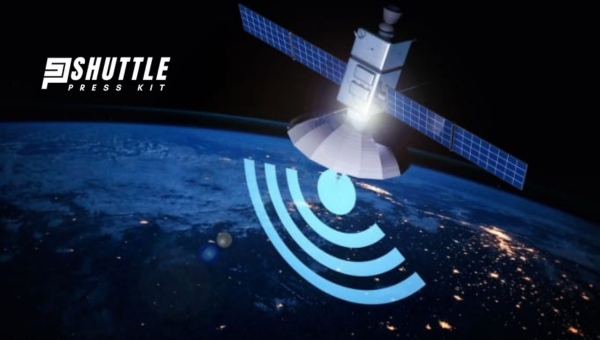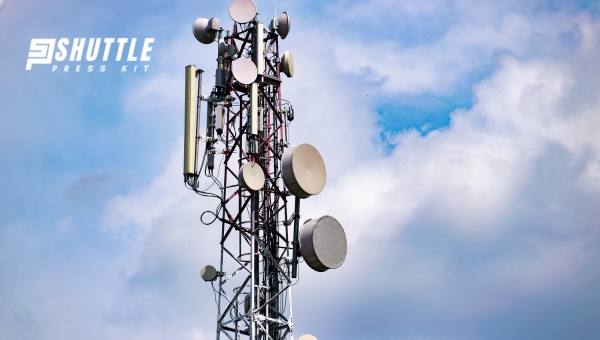Ever wonder who’s trying to catch up with or even beat Starlink in the race to offer the best internet from space? Well, you’re not alone! I’m here to dive into the world of “Starlink Competitors and Rivals,” revealing who stands tall against this giant. This journey might just change how you look at your internet options!
While Starlink is making headlines for its high-speed internet from space, it’s not without competition. Companies like Amazon’s Project Kuiper, Viasat, and OneWeb are lining up as significant rivals. Each has its unique approach to connecting people globally, offering a mix of speed, coverage, and service plans. So yes, even in space no company is alone; there’s always a race on!
Top 7 Starlink’s Rivals and Competitors
Starlink, powered by SpaceX, is known for its high-speed internet from space. However, it faces competition from various companies around the world. Each competitor has its strategies and technologies aiming at connecting people to the internet globally. Let’s explore eight significant rivals that stand toe-to-toe with Starlink in this ever-growing market.
1. OneWeb
OneWeb, operating under the Eutelsat Group, has established itself as a significant contender in the satellite broadband internet arena. With 618 satellites orbiting Earth, it stands as a pivotal force in low Earth orbit (LEO) technology to provide global broadband services, only trailing behind Starlink in terms of operational satellites.
After being salvaged from bankruptcy by the UK government in 2020, OneWeb has focused on delivering connectivity solutions primarily to telecommunications companies rather than individual consumers.
March 2023 marked a milestone for OneWeb with its successful launch of the last set of satellites needed for worldwide coverage from Sriharikota Spaceport in Andhra Pradesh. This achievement underscores its mission to offer global broadband access and signifies its strategic position as a leading Starlink competitor.
Also Read: Starlink Travel Case Review: Must-Have Accessory?

2. Telesat
Telesat is a company that works with satellites. Satellites are machines that move around the Earth high in the sky. They can send signals for TV, internet, and phone calls over very long distances.
This company is special because it helps connect places where it is hard to get internet or phone service. Imagine living in a place so remote that you can’t simply pick up your phone and see who’s online or call your friends. That’s where Telesat comes in. They use their satellites to reach these faraway places, making sure everyone can stay connected.

Telesat also has plans to make their service even better. They want to put more satellites into space to cover the whole world. This means that no matter where you are, whether on top of a mountain or in the middle of an ocean, you could use your phone or go online without trouble.
3. EchoStar Mobile
EchoStar Mobile and Starlink are like competitors in a race. Both want to provide the best and fastest internet service from space to places far and wide. While Starlink has gained a lot of attention worldwide for its high-speed internet from the sky, EchoStar Mobile offers its own unique benefits.
What makes EchoStar Mobile stand out? First off, they focus on making sure people in remote areas can get online. This is really important because in many parts of the world, fast and reliable internet is hard to come by. Think about being in a place where phones barely work; that’s where EchoStar wants to make a difference.

Unlike Starlink’s approach of sending lots of small satellites into space, EchoStar might use different technologies or strategies to connect people. They both aim at making sure you can get online easily, whether you’re in a bustling city or out on a distant farm.
Also Read: Starlink Data Caps: Understanding Limits and Solutions
4. Telstra
Telstra is a big company in Australia that provides internet service. It is seen as a competitor to Starlink, which is known for its fast internet from space. While Starlink uses satellites in space, Telstra depends more on cables and towers on the ground. This makes them different from each other.
Telstra has been around for a long time and has many customers. They offer various services like phone calls, internet, and television. Their experience helps them understand what people need. On the other hand, Starlink is newer but grows fast because it can provide internet to hard-to-reach places.
One main point about Telstra competing with Starlink is the way they connect people to the internet. Telstra uses wires and mobile towers, which are already in place and cover most areas where people live. But, their service can be affected by things like bad weather or too many people using it at once.
5. Viasat
Viasat is a company that sends satellites into space. These satellites help people connect to the internet from any place on Earth. This idea is similar to what another company, called Starlink, does. Starlink is part of SpaceX, which is led by Elon Musk. Both Viasat and Starlink aim to make the internet available everywhere, even in places where it’s hard to get.
One big difference between Viasat and Starlink is how they set up their services. Viasat has a few very powerful satellites that orbit far above the Earth. This means they can cover large areas but might not provide the quickest connection all the time, especially when many people are using it at once.
On the other hand, Starlink plans to use thousands of smaller satellites that orbit much closer to Earth. This could make their internet faster and more reliable for users.
6. Project Kuiper
Project Kuiper is a space project by Amazon. Its main goal is to make internet service available all over the world using satellites in space. This project is quite similar to another big project called Starlink, which is run by SpaceX, a company owned by Elon Musk.
The idea behind Project Kuiper is pretty straightforward but incredible. They plan to put over 3,000 satellites up in the space around our Earth. These satellites will then send internet signals down to the ground. This means that even people living in very remote or hard-to-reach places could have fast internet, just like people living in big cities.
This project is directly competing with Starlink because both are trying to do the same thing: provide high-speed internet from space worldwide. However, they have differences too. While Starlink has already started launching its satellites and providing services in some areas, Project Kuiper is still preparing for its big launch.
7. Inmarsat
Inmarsat is a company that helps people send messages and talk to each other from any part of the world. Think of it as a giant helper in the sky that connects phones and computers even when they are very far apart, like in the middle of the ocean or deep in the desert. This company uses special machines called satellites which they have put way up in space to make this magic happen.
Inmarsat provides an invisible bridge through its satellites so people can communicate without worrying about where they are in the world. Whether it’s for safety reasons, business needs, or just saying hello to someone far away, this company makes long-distance chatter possible with clarity and speed
Also Read: Can You Get A Static IP From Starlink? Find Out Here!
Frequently Asked Questions
What makes a company capable of competing with SpaceX?
A company can compete with SpaceX if it has the resources to build a large satellite network, strong tech know-how, and the financial support to outlast the long setup process.
How does Project Kuiper plan to challenge Starlink’s dominance?
Project Kuiper aims to launch thousands of satellites to provide fast internet globally. With Amazon’s backing, they have the potential funds and infrastructure that might rival Starlink.
Are there any significant technological hurdles for new entrants trying to rival SpaceX’s internet service?
Yes, new players must overcome challenges like launching cost-effective satellites, ensuring reliable global coverage, and creating user-friendly ground equipment.
Will government-backed constellations pose a serious threat to private companies like SpaceX?
Government constellations could offer stiff competition due to national interest in self-reliance and potential regulatory support that favors domestic providers over private companies.
Also Read: Can You Get A Static IP From Starlink? Find Out Here!
Conclusion
SpaceX has shaken up the world with its Starlink project, aiming to provide high-speed internet from space. This bold move has ushered in a new era of competition, where traditional and unconventional contenders alike are stepping up their game.
The future looks bright for consumers worldwide; more competition means better services and potentially lower prices. As companies race to outdo each other, this fierce rivalry promises to catapult global connectivity into an unprecedented age of advancement.
